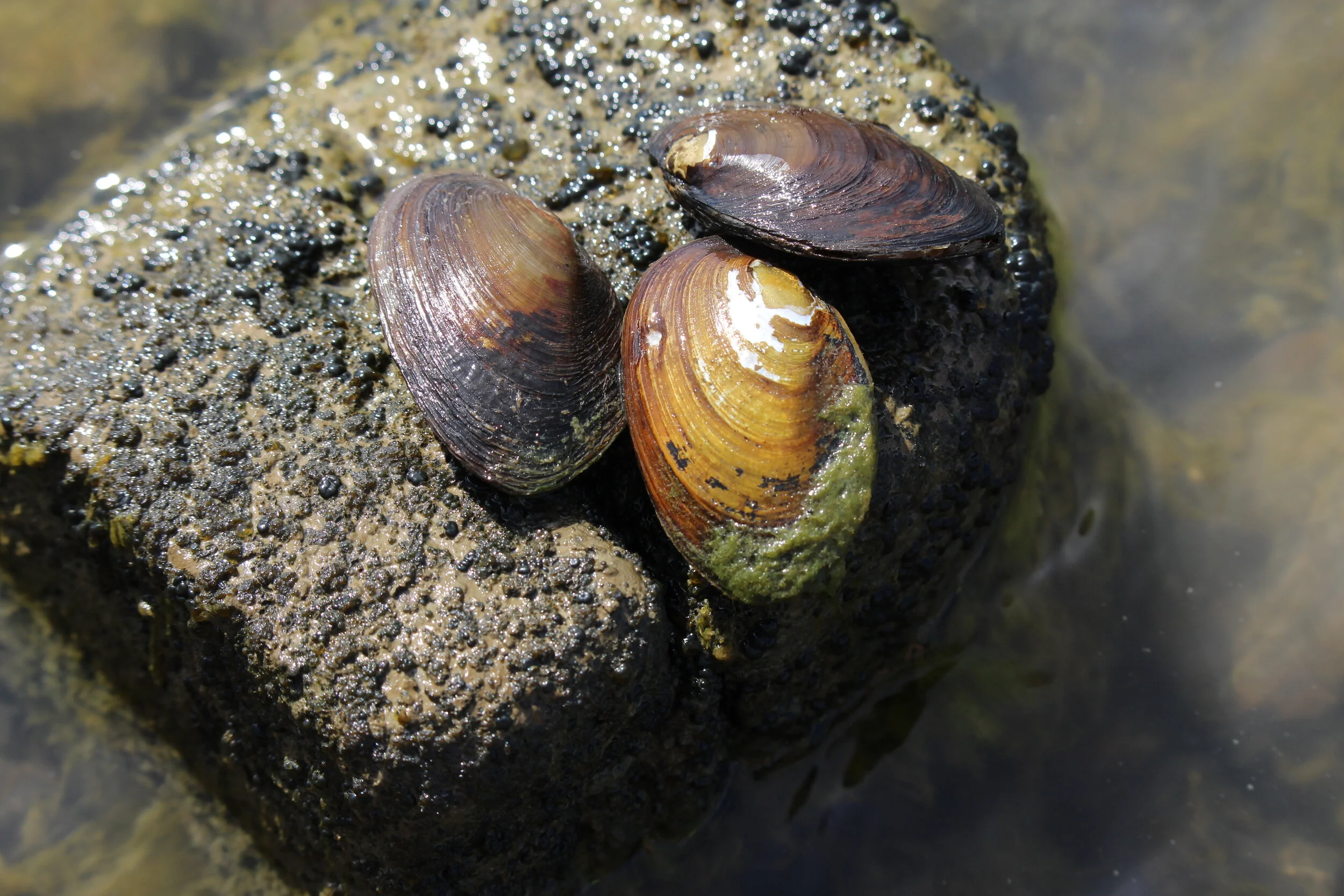Kakahi
This kōrero (story) was written by Amber McEwan
As summer approaches and water temperatures begin to warm up, visitors to Wairarapa Moana might be interested in getting out and meeting some lesser-known local shellfish.
While the kākahi or freshwater mussel might not look very special, it has a fascinating life cycle. Most mussels release eggs and sperm for external fertilisation in the water, but a mother kākahi keeps her eggs inside her shell to develop.She takes in sperm through her siphon and her eggs are then fertilised internally and kept in brood chambers until they develop into larvae called glochidia. These glochidia (about the size of a grain of sand) are then ‘sneezed’ out, and they latch onto a passing native fish to hitchhike to a new home.
Kākahi are amazingly long-lived, and some are thought to be over 50 years old. Like most freshwater mussels around the world, the future for the New Zealand kākahi is uncertain, as young kākahi are usually absent or very rare, including in Lake Wairarapa.
Kākahi are thought to be very sensitive to ammonia, which enters waterways through sewage discharges and farming runoff. Host fish for kākahi larvae are also a lot harder to find, as so many of our native freshwater fish species are declining. In addition, worsening water quality and loss of habitat may be impacting kākahi survival.
There are three species of kākahi in New Zealand. One of these (Echyridella menziesii) is distributed throughout New Zealand, another (E. aucklandica) has been found in Auckland, Northland, the lower North Island and the very bottom of the South Island. The third (E. onekaka) is known only from sites in the north-west of the South Island. E. menziesii and E. aucklandica are found in Lake Wairarapa. All three species are only found in New Zealand and all are classified as either “threatened” or “declining”. If you have yet to meet one of these intriguing native critters, the warm water temperatures of summer are the perfect time for a kākahi hunt. Wander out in the shallows at Lake Domain or Wairarapa Lake Shore Scenic Reserve and feel around on the bottom with your hands and feet - you may just find some kākahi!
Amber McEwan is an ecologist and the principal scientist at Riverscapes Freshwater Ecology. She has many years of experience working with (and admiring!) kākahi, and is currently researching ways to successfully translocate them as one means of saving populations.
Amber is also an enthusiastic science communicator and freshwater advocate. She has written five children’s books, designed a card game, and has written many articles about freshwater issues published in various media. She also manages Riverscapes Kids which offers educational resources that are free to download.
Previous feature creatures
Inanga



